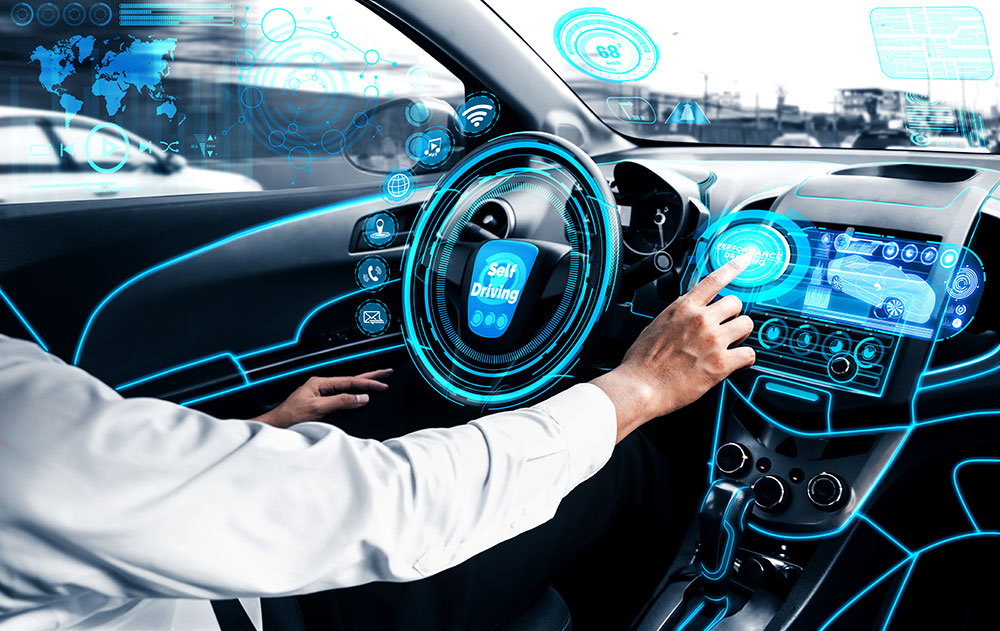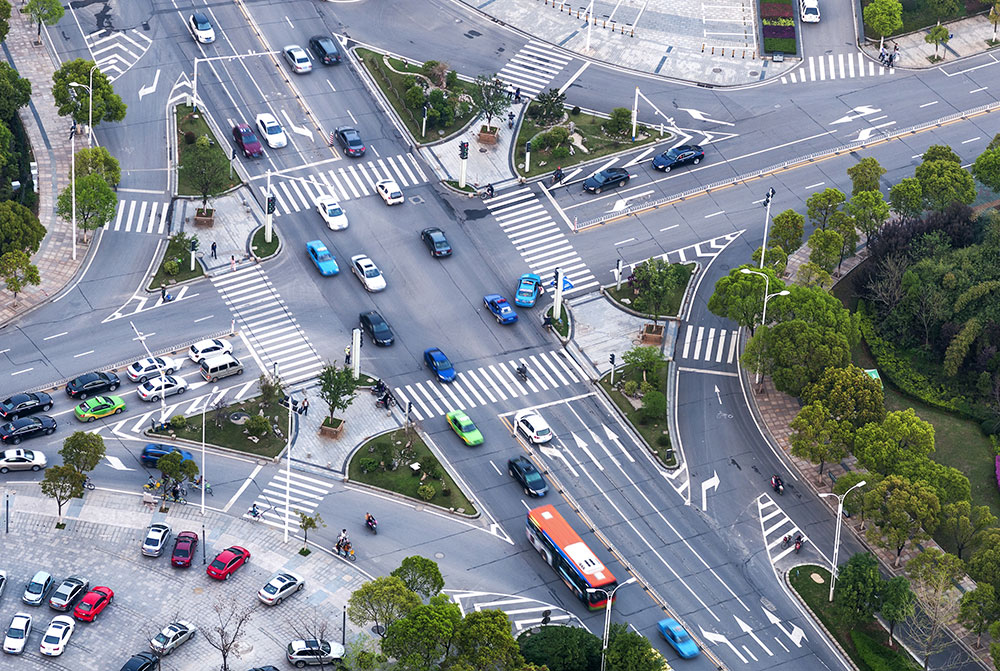Intelligent traffic management solutions aren’t only critical tools for transport authorities and departments – they can hold the key to safer, more sustainable cities, too, explains ST Engineering’s Chew Men Leong.
 Data-driven trafffic management systems leverage technologies such as analytics, AI and edge computing to enhance traffic efficiency, minimise congestion and improve travel experiences
Data-driven trafffic management systems leverage technologies such as analytics, AI and edge computing to enhance traffic efficiency, minimise congestion and improve travel experiences
Road networks are among the largest pieces of infrastructure that cities and their transport agencies have to manage. In the last decade, urban traffic levels – and the negative effects they bring to cities – have increased in line with population growth, putting significant pressure on road infrastructure, and on the authorities whose job is to assess the best ways of optimising it.
Traffic and congestion in cities detract from urban liveability in numerous ways – from potentially reducing citizens’ ability to walk, cycle or use other more active modes of transportation to increasing levels of pollution and worsening air quality. Travel patterns during the Covid-19 pandemic have shown how difficult it can be to change citizen mindsets and habits; at the peak of Covid infection rates, traffic levels fell dramatically, and active travel became more popular – with new temporary infrastructure even installed across a number of cities to support it – not to mention the improvement in air quality in urban and economic centres.
Fast forward another 18 months and traffic trends are returning rapidly, and in some cases, beyond pre-pandemic levels, with public transport ridership still yet to return to normal, pushing more people into privately-owned cars which contribute further to congestion.
Technology for traffic management solutions have advanced a long way to meet cities’ specific needs and a global push towards more connected and sustainable transport ecosystems. The advent of new technologies like machine learning and C-V2X – combined with their integration into vehicles, infrastructure and traffic management platforms – has broadened the narrative around traffic management from improving transport networks to changing how cities are planned and developed.
These solutions are having both short and long term impacts on transport and urban planning, from helping transport agencies cope with traffic events, to identifying trends and patterns needed to support pedestrianisation.
Data is central to today’s intelligent traffic management systems. Whether it comes from video or sensors in infrastructure and vehicles, a constant stream of actionable real-time data enables urban transport departments to improve their decision making and reduce the time it takes to respond to incidents.
 C-V2X provides transport authorities with richer set of real-time data from connected vehicles, infrastructures and sensors for enhanced analysis and decision-making.
C-V2X provides transport authorities with richer set of real-time data from connected vehicles, infrastructures and sensors for enhanced analysis and decision-making.
The generation, collection, analysis, transmission and dissemination of data is central to the smart city concept, with new technologies continuing to push the envelope on what can be achieved in developing safer, more efficient roads. Among these technologies is C-V2X, which is set to play an increasingly important part in this process, more closely connecting vehicles to their surroundings and, by extension, the authorities responsible for managing roads and traffic.
With increasing levels of 5G connectivity in cities and the added connection capacity it brings to small spaces, C-V2X can now begin making a tangible difference to the ways that transport departments deal with traffic by transmitting data to promote more agile decision-making processes. It also accelerates the potential for autonomous driving capabilities in urban environments, which can potentially aid reduction of congestion and – combined with electric vehicle technology – reduce pollution and carbon footprint.
Proponents of C-V2X across the transport sector – such as those at the 5G Automotive Association (5GAA) – are beginning to build C-V2X abilities into vehicles with the help of new chipsets that can communicate with other vehicles, road users and service provider networks. The potential impact of C-V2X on more cooperative intelligent transport systems is significant with Global Market Insights predicting the market being worth upward of $900 million by 2025.
 C-V2X accelerates the potential for autonomous driving capabilities in urban environments
C-V2X accelerates the potential for autonomous driving capabilities in urban environments
The collection and transmission of data with the help of these new technologies is only half the battle, however; the platforms that transport departments use to receive and analyse the data is arguably more important in creating safer, cleaner roads and more liveable cities. The modern traffic management system can provide a citywide holistic view of road networks and transport departments’ available resources. It facilitates the management of transportation networks, infrastructure and subsystems from a centralised hub that utilises AI-enabled data analytics to provide better insights to improve traffic flow, relieve congestion and create safer road networks.
Through advanced connectivity, artificial intelligence, video analytics and automatic incident detection, traffic management systems give transport departments access to up-to-date traffic information that enables them to pinpoint incidents accurately. These systems can also generate incident response plans that take into consideration the skills and experience of traffic experts to ensure that only minimal human intervention is required. These systems are critical in improving efficiency not just on roads but inside traffic control centres, saving time, money, resources, and potentially lives.
Beyond incident response, intelligent traffic management systems should also look to mitigate incidents before they occur. By analysing data trends and patterns to better predict traffic flows and demand with the use of AI, the latest traffic management systems can help to minimise congestion and achieve more sustainable transport management.
The modern traffic management system can provide a citywide holistic view of road networks and transport departments’ available resources
Traffic forecasting and modelling data is not only a useful tool for transport authorities but also for urban planning departments at a city level. By forecasting and modelling different scenarios, urban and transport planners are able to assess the impact of re-routing decisions before carrying out the necessary action. In the short term, it can enable improved traffic flow or incident avoidance, while in the long term, it can lead to the transformation of urban spaces through pedestrianisation projects, promoting more active travel and prioritising citizens over vehicles.
There are notable examples in cities around the world, from New York’s Times Square – which underwent significant pedestrianisation between 2009 and 2014, leading to 40 per cent fewer pedestrian injuries and 15 per cent fewer vehicular accidents in that time – to the streets of Paris which is aiming to become the world’s first 15-minute city.
These technologies are also a crucial part of the puzzle for developing and managing smarter junctions and intersections. Junctions and intersections are critical parts of any road networks where most traffic disruptions and conflicts occur. As they are also potentially risk-laden parts of the urban road network, junctions require strict signal control to keep them safe and efficient, but it’s a difficult and time exhaustive process.
The emergence of more intelligent junction controls, alongside with AI-driven platforms to manage them, helps to keep complexity and the required time resource to implement them to a minimum. Market-leading solutions are already designed to work with future technologies, like C-V2X, as well as those currently available, meaning they will have the longevity to keep traffic at junctions in control well into the next generation of mobility technology.
 Dynamic data feeds to AI-driven smart digital junctions enables real-time traffic sensing to better anticipate demand and minimise unnecessary delays and incidents at junctions
Dynamic data feeds to AI-driven smart digital junctions enables real-time traffic sensing to better anticipate demand and minimise unnecessary delays and incidents at junctions
A comprehensive range of commuter-centric smart mobility solutions that leverages innovative technologies such as AI, C-V2X, edge computing, is essential for transport authorities and cities to optimise traffic efficiency, expand road capacity and ensure smoother and safer travel journeys.
Having successfully deployed over 300 Smart Mobility rail and road projects in 50 cities, ST Engineering is helping cities all over the world gear up their transport ecosystem and transform into more connected, resilient and sustainable spaces to improve quality of lives for citizens and communities. For more information on our solutions, visit AGIL Urban Traffic Management System and AGIL Smart Digital Junction Suite.
Contact us